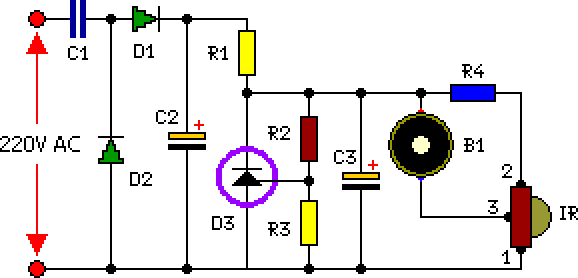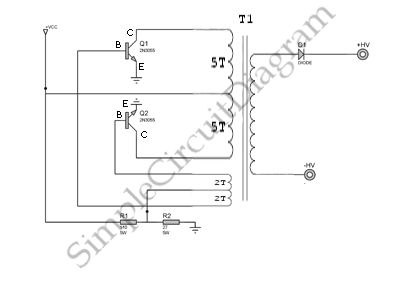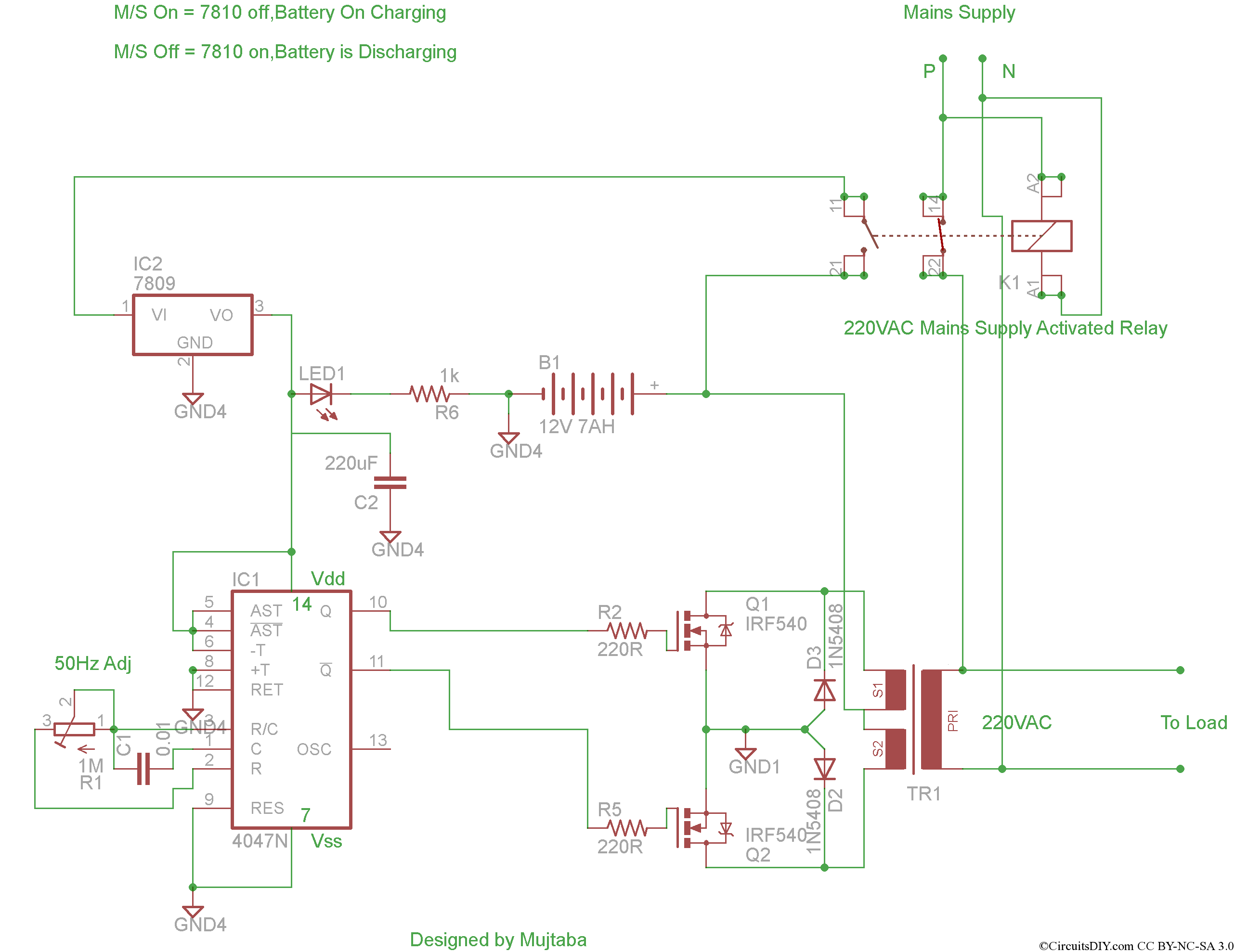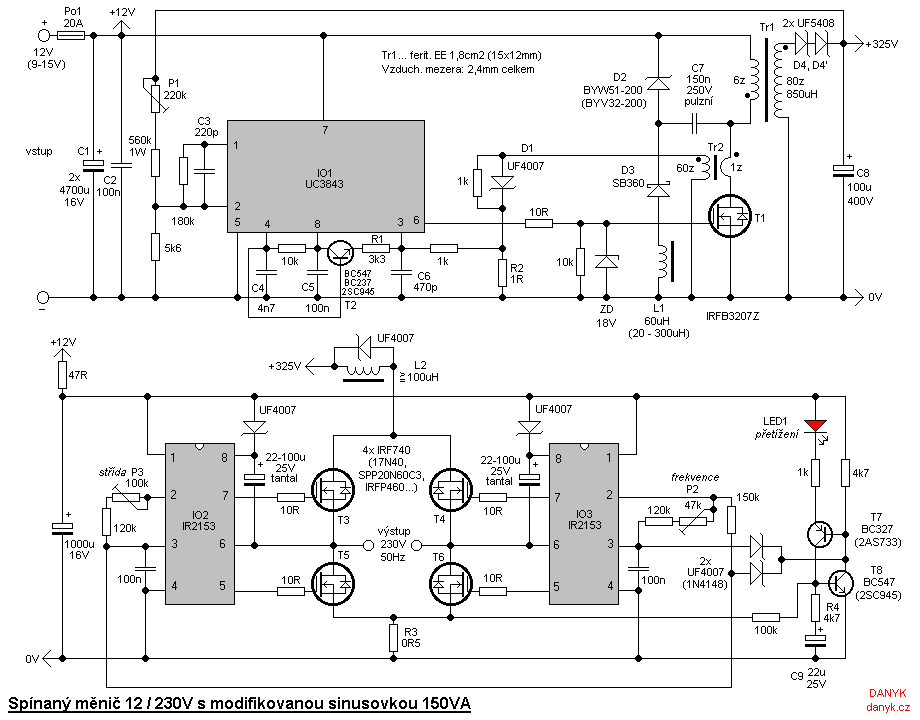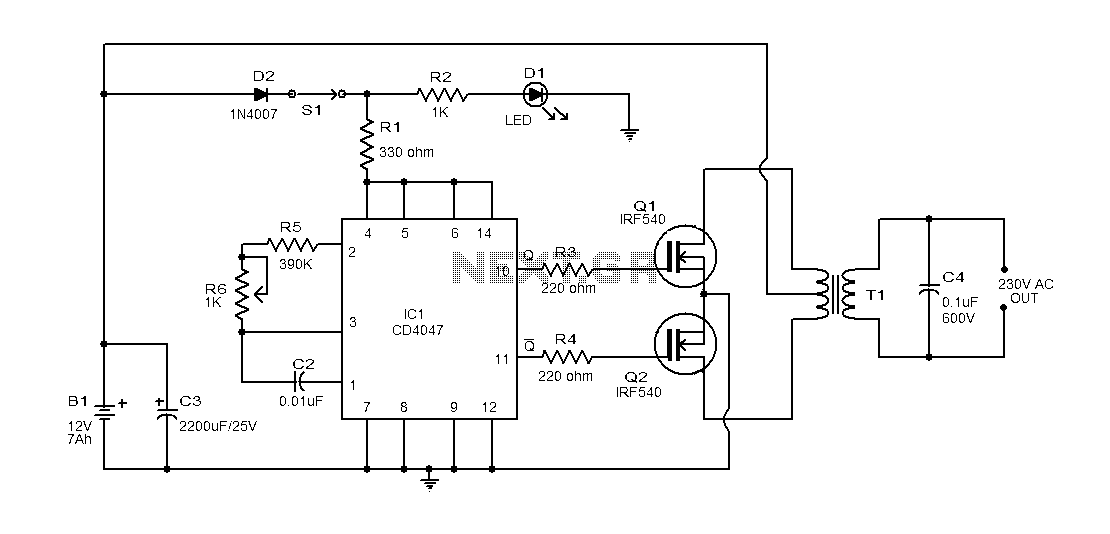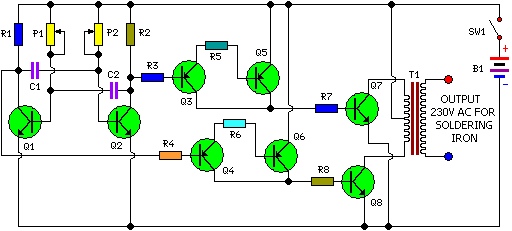
12vdc 220vac inverter
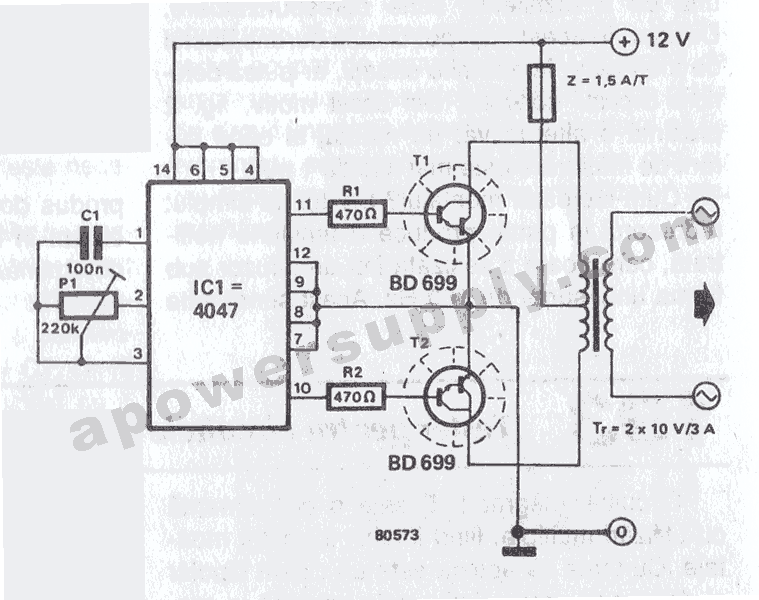
This circuit inverter converts a 12V DC battery to 220V AC, serving as a replacement for home energy. The inverter can power small electronic devices such as lamps, radios, phone chargers, and disc players. The central component of the inverter circuit is the CMOS 4047, which transforms a 12V DC voltage into 220V AC voltage. The 4047 operates as an astable multivibrator. Pins 10 and 11 produce a symmetrical rectangular signal that is amplified by Darlington transistors T1 and T2, ultimately reaching the secondary coil of a transformer rated at 2 x 10V/100VA. The primary coil is designed for 220V AC voltage terminals. For optimal performance, a toroidal core transformer with low losses is recommended. The output frequency can be adjusted within specific limits (50 to 400 Hz) using potentiometer P1.
The inverter circuit utilizes the CMOS 4047 as a primary oscillator, generating a square wave signal that is essential for the conversion of DC to AC. The astable multivibrator configuration allows for continuous oscillation, producing a frequency determined by external resistors and capacitors connected to the 4047. The output from the 4047 is a symmetrical square wave, which is then amplified by the Darlington pair transistors (T1 and T2). This amplification stage is crucial as it increases the current capacity of the signal to drive the transformer effectively.
The transformer plays a vital role in the voltage conversion process. With a primary winding designed for 220V AC, the transformer steps up the voltage from the amplified signal to the desired output level. A toroidal core is recommended due to its efficiency and reduced electromagnetic interference, which enhances the overall performance of the inverter.
The output frequency of the inverter can be finely tuned using potentiometer P1, allowing the user to adjust it between 50 Hz and 400 Hz. This flexibility is beneficial for different applications, ensuring compatibility with various electronic devices that may require specific frequency inputs.
Overall, this inverter circuit provides a practical solution for converting low-voltage DC power into usable AC power, making it suitable for a range of small electronic devices in home energy applications. Proper attention to component selection and circuit design will optimize the inverter's performance and reliability.This circuit inverter converts 12V DC battery to AC 22oV as the replacement of home energy. The inverter can be used for small electronic devices such as lamps, radio, phone charger, disc player, etc. The inverter circuit is a central component, the CMOS 4047, and converts a DC voltage of 12 V to 220 V AC voltage.
4047 is used as an astable multiv ibrator. The pin 10 and 11 we find a symmetrical rectangular signal is amplified by Darlington transistors T1 and T2 trailer, and finally reaches the secondary coil of a transformer of the network (2 x 10V/100VA). Primary coil voltage is 220 AC voltage terminals. For best performance, use a toroidal core transformer with low losses. P1 to the output frequency can be regulated within certain limits (50. 400 Hz). 🔗 External reference
The inverter circuit utilizes the CMOS 4047 as a primary oscillator, generating a square wave signal that is essential for the conversion of DC to AC. The astable multivibrator configuration allows for continuous oscillation, producing a frequency determined by external resistors and capacitors connected to the 4047. The output from the 4047 is a symmetrical square wave, which is then amplified by the Darlington pair transistors (T1 and T2). This amplification stage is crucial as it increases the current capacity of the signal to drive the transformer effectively.
The transformer plays a vital role in the voltage conversion process. With a primary winding designed for 220V AC, the transformer steps up the voltage from the amplified signal to the desired output level. A toroidal core is recommended due to its efficiency and reduced electromagnetic interference, which enhances the overall performance of the inverter.
The output frequency of the inverter can be finely tuned using potentiometer P1, allowing the user to adjust it between 50 Hz and 400 Hz. This flexibility is beneficial for different applications, ensuring compatibility with various electronic devices that may require specific frequency inputs.
Overall, this inverter circuit provides a practical solution for converting low-voltage DC power into usable AC power, making it suitable for a range of small electronic devices in home energy applications. Proper attention to component selection and circuit design will optimize the inverter's performance and reliability.This circuit inverter converts 12V DC battery to AC 22oV as the replacement of home energy. The inverter can be used for small electronic devices such as lamps, radio, phone charger, disc player, etc. The inverter circuit is a central component, the CMOS 4047, and converts a DC voltage of 12 V to 220 V AC voltage.
4047 is used as an astable multiv ibrator. The pin 10 and 11 we find a symmetrical rectangular signal is amplified by Darlington transistors T1 and T2 trailer, and finally reaches the secondary coil of a transformer of the network (2 x 10V/100VA). Primary coil voltage is 220 AC voltage terminals. For best performance, use a toroidal core transformer with low losses. P1 to the output frequency can be regulated within certain limits (50. 400 Hz). 🔗 External reference
